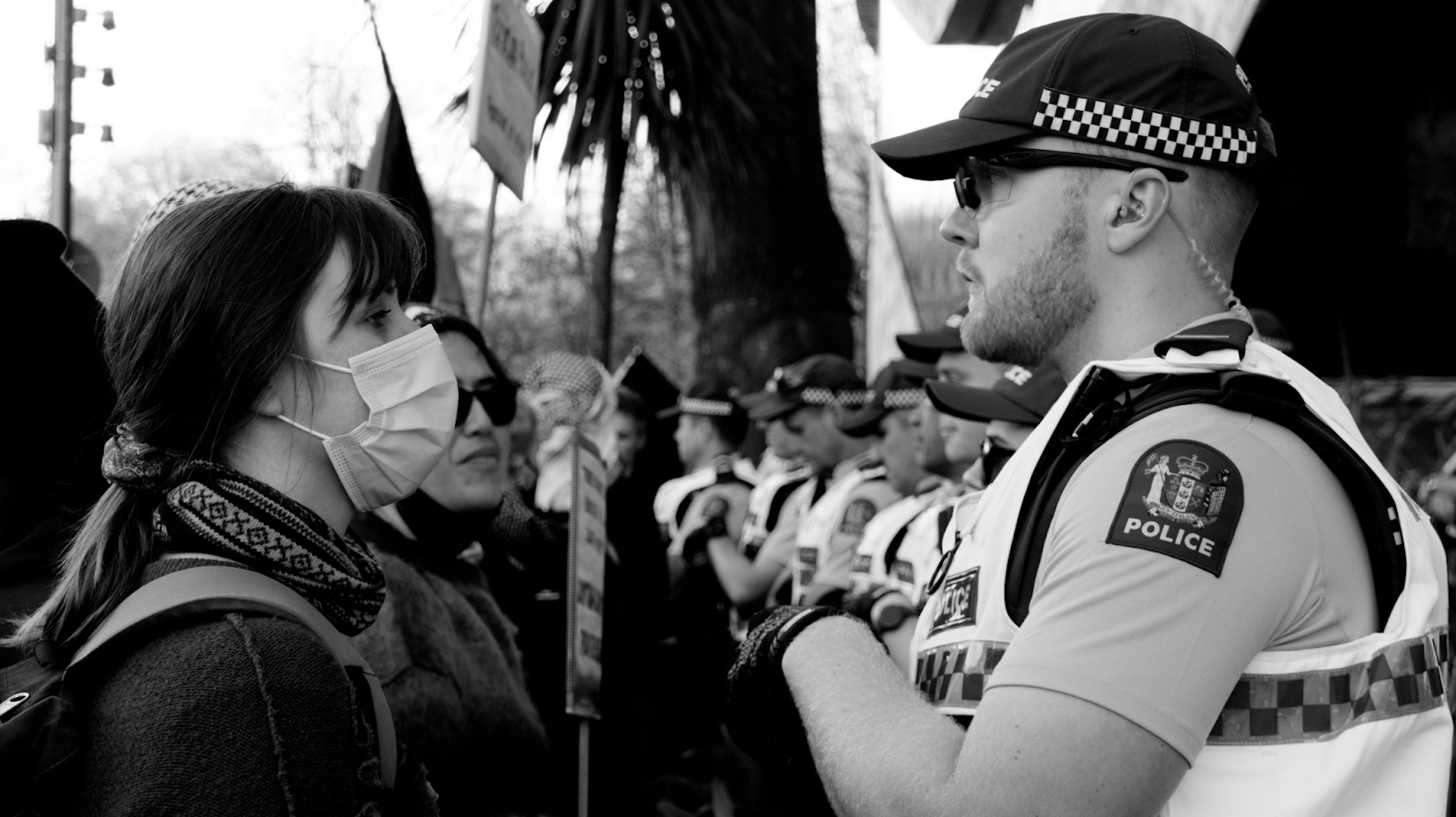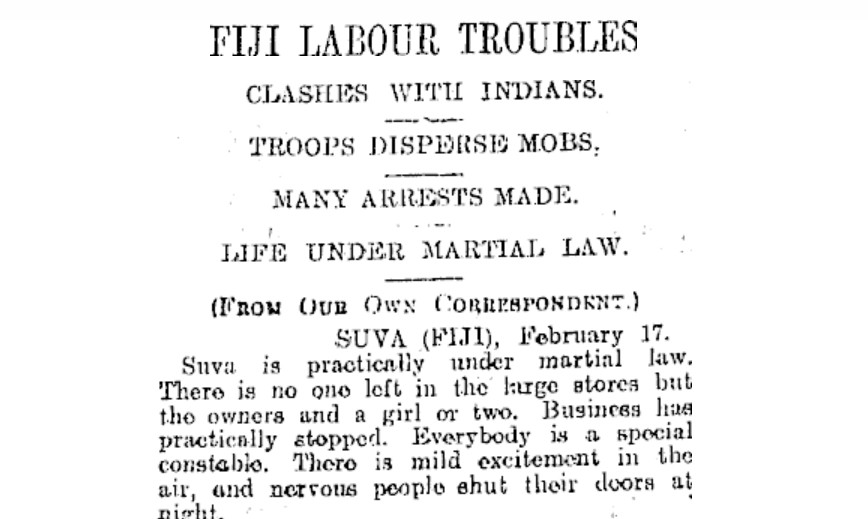In-depth post-election perspectives from Japanese socialist Tsutomu Teramoto. Teramoto is a member of the Japan Revolutionary Communist League.
As expected, the general election of December 14, 2014 gave an absolute majority of the seats again to the ruling coalition of Liberal Democratic Party (LDP) and Komei Party. LDP got 291 seats and Komei Party got 35 seats out of the total of 475 seats. The biggest opposition, Democratic Party (DP) got only 73 seats.
The election was called after Prime Minster Shinzo Abe abruptly decided to dissolve the House of Representatives in order to outflank opposition parties and secure an absolute majority for four more years. DP, the main opposition party, was still in a deep crisis after its catastrophic failure during 2009 – 2012 when it was the ruling party. Other opposition parties were also hit by internal crisis and splits.
The table below shows the number of seats won by each party.
| Total | Constituency | Increase/
Decrease | ||
| S | P | |||
| Liberal Democratic Party | 291 | 223 | 68 | -4 |
| Democratic Party | 73 | 38 | 35 | +11 |
| Innovation (Ishin) Party | 41 | 11 | 30 | -1 |
| Komei Party | 35 | 9 | 26 | +4 |
| Communist Party | 21 | 1 | 20 | +13 |
| Next Generation Party | 2 | 2 | 0 | -18 |
| People’s Life Party | 2 | 2 | 0 | -3 |
| Social Democratic Party | 2 | 1 | 1 | 0 |
| Independent | 8 | 8 | – | -6 |
| Total | 475 | 295 | 180 | – |
S=single-seat districts
P=proportional-representation districts
The success of LDP represents a real danger of a further rightist turn and the destruction of people’s rights and living standards. Now that the LDP has secured four years of its control over parliament, they will redouble their efforts to clear what remains of what they call “post-war regime” and revise the constitution.
In the election campaign, the ruling coalition systematically avoided debates over controversial issues like “national security”, U.S. bases in Okinawa, nuclear power plants, TPP (Trans-Pacific Partnership Agreement), and the revision of the Constitution. In fact, because of the total capitulation of the majority of the Democratic Party over these issues, only the Communist Party and the Social Democratic Party challenged the ruling coalition over these issues.
The LDP focused on the “success” or the “progress” of the dubious economic policy called “Abenomics”. Although the economic situation was getting worse, most people had no expectation for change. Thus the voter turnout was only 52.6%, the lowest in the postwar period.
Criticism against the policy of the coalition government was expressed mainly in two ways:
1) The Communist Party increased the number of votes and seats dramatically. CP increased its seats from 8 to 21.
2) In all of the 4 districts in Okinawa, voters supported candidates who rejected the plan to build a new U.S. base in Henoko beach area.
In order to objectively analyze the situation represented by the result of the 2014 election, we have to look into the behavior of voters carefully. The House of Representatives in Japan is composed of 295 seats representing single-seat electoral districts and 180 seats elected from 11 proportional-representation electoral districts. Each voter has two votes – one for a candidate for single-seat district and one for a political party (or one of the candidates for the political party) for proportional-representation electoral districts. The number of seats doesn’t necessary represent the support for the parties. Single-seat districts are usually fought among only a few candidates. The number of votes for proportional-representation districts gives more objective and accurate picture of the political choices of voters.
Changes in political landscape from 2012 to 2014
The table below summarizes the result of three recent national elections – House of Representatives in December 2012, House of Councilors in July 2013 and House of Representatives in December 2014 – in terms of the number of votes for proportional-representation districts. Some parties were divided or absorbed into other parties during the period. The categories of the parties shown in the left-most column are based on the author’s perception.
| Dec.2012 | Jul. 2013 | Dec. 2014 | (2014—2012) | |||
| Right-nationalist and Neo-Liberal | “Next Generation Party” | 1,414,919 | 2.7% | |||
| “Innovation Party” |
12,262,144 |
6,355,299 | 8,382,699 | 15.7% | -3,879,445 | |
| “Everyone’s Party” | 5,245,586 | 4,755,160 | *Split in 2014. Some joined Innovation Party afterward. | |||
| Conservative/Neo-Liberal | LDP | 16,623,541 | 18,460,404 | 17,658,916 | 33.1% | 1,035,375 |
| Mid-Right | Komei | 7,116,265 | 7,568,080 | 7,314,236 | 13.7% | 197,971 |
| Liberal/Mid | DP | 9,628,483 | 7,134,215 | 9,775,991 | 18.3% | 147,508 |
| “New Party – The Earth ” | 346,848 | 523,146 | *This party allied with DP in 2014 election. | |||
| Liberal/Mid Left | “People’s Life Party” | 943,836 | 1,028,721 | 1.93% | ||
| “Green Wind” | 430,673 | *Dissolved at the end of 2013. | ||||
| “Green Party” | 457,862 | *Didn’t run in 2014 election. | ||||
| “Tomorrow Party” | 3,424,071 | *Split in 2012, The majority formed “Party of Living” afterwards. | ||||
| Left | Social Democrats | 1,420,928 | 1,255,235 | 1,287,345 | 2.46% | -133,583 |
| CP | 3,689,988 | 5,154,055 | 6,062,962 | 11.4% | 2,372,974 | |
| Total Number of Votes | 60,179,888 | 53,229,612 | 53,397,351 | |||
| Voting rate | 59.32 | 52.61 | 52.66 |
Although there are many political parties, only six of them ran for proportional-representation districts in all of the three elections. The voting rates for 2013 and 2014 were almost the same.
We can observe some interesting trends from this table,
1) The combined total of the votes for “Liberal/Mid Left” and “Left” are stable – at around 8 million.
2) Failure of the far-right to increase their presence in the parliaments.
3) The success of LDP is not so “overwhelming”.
4) Collapse of the “third pole”.
Forces of “Liberal/Mid Left” and “Left”
1) The combined total of the votes for “Liberal/Mid Left” and “Left” are stable – at around 8 million.
The definitions of “liberal/mid left” and “left” are controversial. In the context of the current political dynamics, the attitude on issues like the revision of the Constitution, nuclear power plants, environment, TPP and so on can be a touchstone to determine the orientation of political parties. So, in this analysis, the parties which oppose the government’s policy on these issues are included in “liberal/mid left” and “left”.
In the general election of 2012, three parties – Tomorrow Party (“Mirai”), SP and CP – represented this group and got 8.5 million votes in all. In the election for House of Councilors, five parties – People’s Life Party (“Seikatsu”), Green Wind, Green Party, SP and CP got 8.2 million votes in all. In the general election of 2014, three parties – People’s Life Party, SP and CP got 8.4 million votes in all.
Apparently, the combined total of the votes for liberal/mid left and left is always around 8 million regardless of the voting rate. These voters seem to have strong concerns over the aggressive policies of Abe and LDP toward the revision of the Constitution, plans for restarting operation of nuclear power plants and so on. They are ready to express their concerns in their voting.
Further analysis of the dynamics among this support base of liberal/mid left and left is needed in order to “intervene” politically.
As regards Democratic Party, the score for 2014 election was at the same level as for 2012 if put together with the votes for New Party – The Earth (“Daichi”) which allied with DP in 2014 election. Although DP is the biggest opposition party, it lacks consistent policies on critical issues because of its internal contradictions. Some of the “liberal” components of the party got out of the party and formed Tomorrow Party in 2012, and then People’s Life Party in 2013. In addition, even their critical support base in trade unions has been largely undermined.
Failure of the far-right
2) Failure of the far-rights to increase their presence in the parliaments.
Innovation (Ishin) Party split into two groups – an Osaka group led by Toru Hashimoto (Mayor of Osaka City) and a group around Shintaro Ishihara (former Governor of Tokyo). Later, the Osaka group absorbed a group which came from Everyone’s Party and maintained the third position with 41 seats. I will discuss the implication of this absorption later. On the other hand, Ishihara’s group reorganized itself into an ultra-nationalist party, Next Generation Party.
Next Generation Party was said to be very popular among young people. Their new hero, Toshio Tamogami, former Chief of Staff at the Self Defense Forces, boast of his popularity on internet. His aggressive and anachronistic remarks over the internet echo the frustration and aggressiveness among people. At the election for Governor of Tokyo last year, Tamogami got 600,000 votes.
Next Generation Party intended to establish an axis of ultra-nationalists to the right of LDP in order to pull LDP further into this direction. However, their challenge proved to be a total failure. They had 20 seats before the election but got only 2 seats. In fact, they were the biggest loser.
According to a conservative author, Tsunehira Furuya, who has been writing about young people’s drift to the right, “although not all the supporters of Next Generation Party accept discriminatory remarks and hate speech by the far-right, it is obvious that those who are supportive for discriminatory remarks and hate speech actively supported the party in the election campaign”. He pointed out that the failure of this party signifies that voters rejected the presence of forces to the right of LDP.
It is too early to predict the dynamism of far-right political forces. But, at this moment, some kind of balance seems to be working to contain the excessive antagonism in the society and in the region.
LDP – “overwhelming victory without fever”
3) The success of LDP is not so “overwhelming”
Although the LDP got nearly two-thirds of seats, their victory was said to be “overwhelming victory without fever”. According to an opinion poll by the Yomiuri Shinbun (a conservative daily newspaper) just after the election, the cabinet support rate was 51%, 2%’s increase from the rate at just before the election. Usually, this rate would jump up after such an overwhelming victory. As regards the support rate for LDP, it decreased to 36% (5%’s decrease).
According to the same poll, in response to the question “what do you think was the reason for the victory of LDP?”, 65% of responders chose “because LDP is better than other parties” (even among supporters of LDP, 64% chose it), while 14% chose “because there was high expectation to Prime Minister Abe” and only 10% chose ”because its economic policy was acknowledged”. In other words, only few people found positive reasons for the victory of LDP.
The findings of this poll correspond with the observation of Furuya, He says, ”the verdict of Japanese people through voting was that they don’t fully support Abe government nor categorically oppose it. But they would reject the excess. Two years are too short to have a definite estimation, so they gave him more time.”
In this regard, it is important to notice that many of conservative leaders including high-rank officials have been expressing their concern over the right-wing shift under Abe government and increasing tensions with China, Korea and even U.S. government.
Contradictory results for the “third pole” parties
4) Collapse of the “third pole”
There has been a lot of talks about the “third pole” political forces. They were expected to refresh the electoral scene after the much heralded “two-party system” proved to be nonfunctional. Innovation Party and Everyone’s Party, which presented themselves as the champion of the third pole, got 17.5 million votes altogether in 2012 and 11.1million votes in 2013. After a series of regrouping in 2014, these forces, which are now represented by Innovation Party and New Generation Party, got 9.8 million votes in 2014. In other words, they lost half of their votes in these two years.
As regards the third pole, we have to look at both the trend in the number of votes and the changes in their political orientation. The question is whether there are significant changes in the political orientation of Innovation Party after its split with Ishihara’s group (now, Next Generation Party) and fusion with a group of former Everyone’s Party.
According to the questionnaire by Mainich Shinbun, a moderate daily newspaper, the new MPs of Innovation Party are divided evenly over their attitude on the revision of the Article 9 of the Constitution (renunciation of war). It is quite interesting because most of the MPs of this party were proponents of the revision after the election of 2012.
Besides these four observations based on the overall analysis of the number of votes, we can notice some interesting development.
Effect on the time schedule for the Revision of Constitution
Prime Minister Abe, a grandson of Nobusuke Kishi, who was a controversial prime minister in late 1950s to early 1960s, has an extraordinary desire to revise the Constitution during his tenure. For this personal desire, he intended to secure enough seats (two-thirds majority in both houses) for four more years by outflanking opposition parties. In addition, he intended to secure potential allies within the third pole forces so that his unreliable ally, Komei Party, as well as moderates within LDP cannot obstruct his way.
The result was not so favorable to him. According to the same questionnaire by the Mainichi, the percentage of MPs who support the revision of Article 9 decreased from 72% to 57% (on the other hand, the percentage of MPs who support the “rights to collective self-defense is 62%, while 23% of MPs oppose it).
Here is an interesting comment on the result of the election from Sankei Shinbun, a daily newspaper featuring right-wing commentators and editors. It deplores, “Although LDP won in the election, it tasted sour for Prime Minister Abe. (…) What Abe wanted in the year-end snap election were not only a victory for LDP but consolidation of the forces of revising Constitution as a whole and further marginalization of the pro-Constitution forces. Although the coalition secured the two-thirds majority, the revision of Constitution seems to have become farther. Now the question is how to reconsolidate the forces of revising Constitution”.
Defeat of LDP in Okinawa
Despite the maneuver of avoiding the debates over controversial issues in the election, the issue of U.S. bases was the focal point in Okinawa. As the result, in all of the 4 districts in Okinawa, the LDP was defeated. This shows the degree of anger of the people in Okinawa against the government which has been ignoring the clear will of the people expressed in a series of elections including the recent election of Governor in November 2014. Even conservative forces rejected the capitulation of the former Governor over the building of a new U.S. base in Henoko district. A coalition was formed among almost all political forces in Okinawa from CP to local leaders of LDP. This coalition is quite important because it is based on the ongoing movements of resistance which have broad mass base in the local society.
After the election, the government renewed its attack on the movement in Okinawa and the confrontation in Henoko is now the focal point of the struggle against the aggressive policy under Abe government.
The success of a broad coalition in Okinawa encouraged progressive people in the whole country. We have to discuss what we can learn form the experience of the struggle in Okinawa and whether it is possible to apply this “model” to other part of the country.
Innovation (Ishin) Party still dominant in Osaka
The result in Osaka also contradicts the general trend. If we focus on the results for proportional-representation electoral districts, the Innovation Party of Mayor Hashimoto is still dominant. As regards 19 single-seat electoral districts in Osaka, LDP prevailed.
The number of votes for Innovation Party in Osaka Prefecture was 1.46 mil, 1.05 mil and 1.14 mil for 2012, 2013, 2014 respectively. Adding the votes for Everyone’s Party in 2012 and 2013, and Next Generation Party in 2014, the number was 1.69 mil, 1.25 mil and 1.22 mil,, respectively.
As regards the opposition parties in both City and Prefectural councils, the number of votes are as follows,
2012 2013 2014
LDP 0.85 mil 0.89 mil 0,87 mil
Komei Party 0.59 mil 0.66 mil 0.59 mil
DP 0.37 mil 0.27 mil 0.29 mil
CP 0.31 mil 0.43 mil 0.44 mil
In other words, there were not significant changes between 2013 and 2014 (voting rates were also around the same level) for all the parties.
If we compare the result of 2014 with that of 2012, we can see some changes.
- Innovation Party (plus Everyone’ Party or Next Generation Party) lost 470,000 votes in these two years.
- DP lost 80,000 votes. This is partly because DP could not run for 14 single-seat electoral districts in 2014. In addition, local governmental workers were banned to participate election campaign by bylaws introduced by Innovation Party. In the past elections, they provided resources to candidates of DP.
- Only CP increased the number of votes. An increase of 130,000 votes.
- The votes for LDP as well as Komei Party kept the same level despite the difference in voting rates.
Referendum on Osaka metropolis plan – unprecedented battle in disorder
It is obvious that Innovation Party has lost the momentum. After they won elections for Governor and Mayor of Osaka Prefecture and Osaka City, respectively, in November 2011 and made a breakthrough at the general election in 2012, of that year, conflicts within the party, increasing criticism over its ignorance of democratic processes, a series of scandals by hand-picked administrators of wards and public schools, and aggressive remarks over war-time sex slave by its leader, Hashimoto, undermined the party’s support base. “Osaka metropolis plan”, which has been the flagship program of Hashimoto, faces difficulty after the party’s defeat in the election of Mayor of Sakai City in 2013. Both prefectural council and city council rejected the master plan for Osaka Metropolis.
“Osaka metropolis plan” is, in itself, a neo-liberal initiative to promote the competitive ability of Osaka through big projects like casinos, a linear motor train, advanced medical treatment and so on. In order to secure financial resources for these projects, a series of privatizations and reduction of public services are planned. Osaka city will be divided into five special wards which have very limited power.
In the prefectural council and city council, all the opposition parties – LDP, Komei, DP and CP – oppose this plan but Innovation Party has been trying to bypass the resistance in the councils by calling for a referendum over this issue.
The result of the general election encouraged Innovation Party because the party managed to maintain nearly as many seats as it had before the election. Especially, the fact that Innovation Party is still the most popular party in Osaka brought about ripple effects on the LDP-Komei coalition. Abe wants to coopt Hashimoto as his potential ally in his drive for revising constitution. On the other hand, MPs of Innovation Party in Tokyo are talking of allying with DP. Komei Party is in dismay. It is said that Soka Gakkai, a religious organization which backs Komei Party, put pressure on the Osaka Headquarter of the party to support the referendum called by Hashimoto,. The government confirmed that it will fully cooperate Hashimoto in facilitating the “Osaka metropolis plan” if he wins the referendum.
Grassroots resistance to Hashimoto and Innovation Party has been developing and efforts to unite the forces against the “Osaka metropolis plan” have been increasing.
The referendum to be held on May 17 will be an unprecedented battle beyond party lines. Like the continuous struggle in Okinawa, broad and united struggle is needed. It is not a choice between LP-Komei coalition and Innovation Party. What is needed is a united struggle to oppose both Abe and Hashimoto.
[This article was published in the February 2, 2015 issue of Kakehashi, the weekly publication of the Japan Revolutionary Communist League. Tsutomu Teramoto is a member of Osaka Education and Amalgamated Workers’ Union (EWA) and a secretary of Osaka Social Forum. Translated and supplemented by Yoshihide Kitahata. Photograph courtesy LaborNet Japan]









